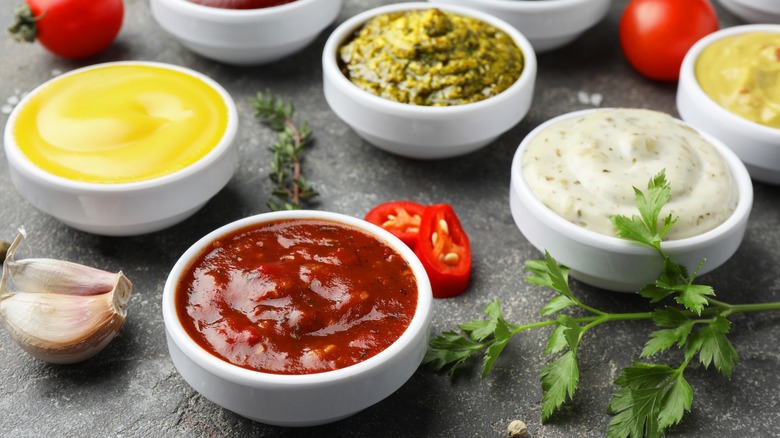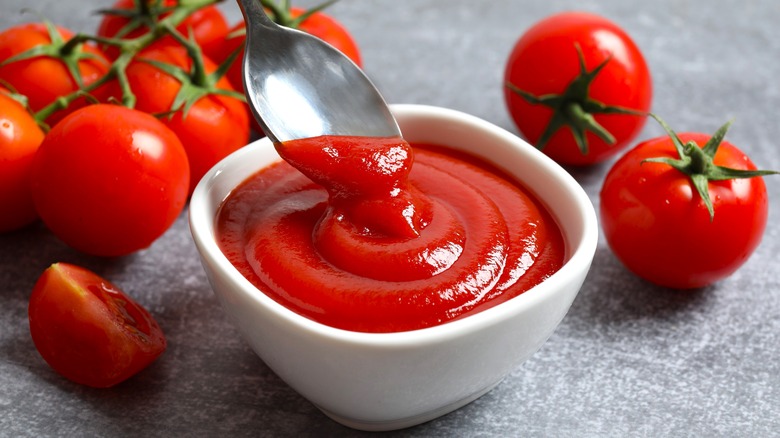A Spoon Is The Key To Differentiating Condiments From Sauces
From a traditional bottle of ketchup to the versatile bang bang sauce and all the different kinds of mustard, there is no shortage of tasty spreads to dress, dip, and drizzle onto your favorite entree. But how exactly are each of these substances categorized — condiment, sauce, or dip? While many people may assume the terms are interchangeable, the definitions for each — and what foods fall under them — remain a hotly contested topic.
An editor for Refinery29 shared their friend's philosophy that attempts to make sense of this debate, dubbing it "Nelson's Spoon Theory" after the theorist herself, Lily Nelson. This theory posits that a spoon determines whether a substance is a condiment. If it is not traditionally handled with a spoon, it qualifies as a condiment. If it can be scooped or spread with a spoon, it falls under either the sauce or dip category.
By this logic, most items dispensed from a bottle or tube — like ketchup, relish, soy sauce, and barbecue sauce — are considered condiments, as a spoon likely cannot fit through the top of a squeezable container. This definition does not, however, account for larger containers of these items, which might allow for scooping. While the spoon theory initially seems to hold some weight, deeper analysis raises more questions than answers.
Not every sauce lover agrees with the spoon theory
While the spoon theory is an interesting one, there are a few holes in its logic. This is mainly due to the fact that if you tried hard enough, you could technically use a spoon on any mixture, negating its ability to be classified in such a way.
There are, however, alternative ways to distinguish between these categories. Some argue that consistency is key: If something is thin and easily spread, it is often a sauce. Thicker substances tend to lean into dip territory. However, this measure of thickness is often up to interpretation. For example, some might consider ketchup to be a thick, paste-like substance, while others find it thin compared to other dips like hummus.
And then there is the matter of how these dips, sauces, and condiments are enjoyed. Consider the highly controversial mayonnaise, for example: some cultures happily dip their fries and veggies into the egg-and-oil mixture, while others would never dream of applying mayo to anything other than sandwich bread as a condiment. Some refer to ranch dressing — which was actually invented by a cowboy on a dude ranch — as a sauce when they dress it over a salad or incorporate it into a recipe, while others prefer to dunk their finger foods into a bowl of ranch and call it a dip. Ultimately, there is no one perfect way of differentiating between sauces, dips, and condiments because it is really up to each individual's way of enjoying them.


